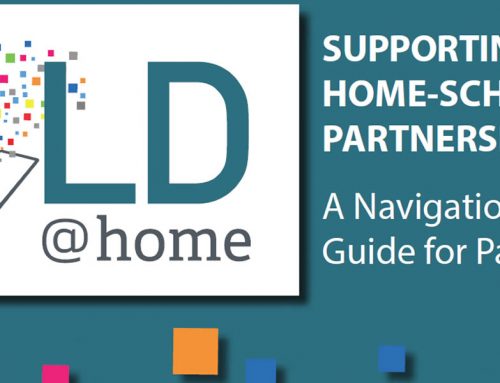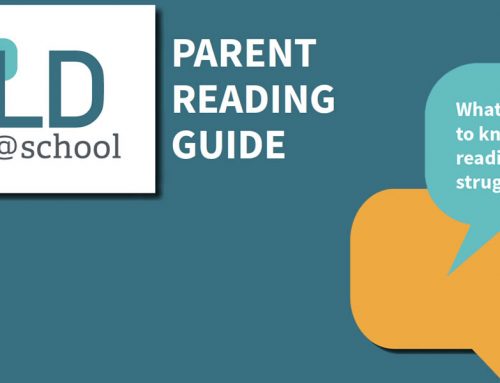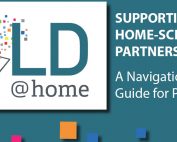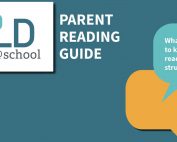The following article provides an overview of accommodations, modifications and alternative skill areas; terms that are commonly used in the school system, and discusses where students with learning disabilities (LDs) fit in.
What are Accommodations, Modifications and Alternative Skill Areas?
Accommodations are the special teaching and assessment strategies, supports and/or individualized equipment (including technology) that are required to enable a student to learn and demonstrate learning. Accommodations do not alter the provincial learning expectations for the grade level.
For subjects that are accommodated only, there should be a list of Instructional Accommodations (different ways of teaching or presenting materials), Environmental Accommodations (e.g. seating, cuing, hallway routines) and Assessment Accommodations (including use of technology). These accommodations may be common to all subjects, or may vary from subject to subject, in which case the subjects should be listed separately.
Accommodated only (AC) is the term used on the IEP form to identify subjects or courses from the Ontario curriculum in which the student requires accommodations alone in order to work towards achieving the regular grade expectations.
AC subjects or courses should not have the IEP box checked off on the provincial report card. Marks for Accommodated only subjects/courses are based on grade level curriculum, rather than on modified expectations. The IEP box on the provincial report card is only for courses where the curriculum expectations are modified or alternative, and the marks are not based on the same criteria as the other students.
Modifications refer to the changes made to the age-appropriate grade level expectations for a subject or course in order to meet the needs of the student.
Modified (MOD) is the term used on the IEP form to identify subjects or courses from the Ontario curriculum in which the student requires modified expectations – expectations that differ in some way from the regular grade expectations.
Modifications may involve either raising or lowering grade level expectations. For the core subjects, such as math and language, the expectations may be taken from a different grade level (higher or lower). For content subjects, such as social studies or history, the modifications may include significant changes to the number and/or complexity of learning expectations in the regular grade level curriculum.
For each subject that is modified, even partially, a program page of the IEP gets filled out with Current Level of Achievement, an annual program goal, and Learning Expectations for each reporting period (report card term).
At the secondary level, a student might be working in a subject on almost all the course curriculum expectations, but the complexity or number of expectations might be modified in a few areas. In this case the IEP would indicate “the student will do all the curriculum expectations except …”. The school principal would decide how much modification could be allowed in order for the student to get credit for the course.
Alternative skill areas (ALT) are based on expectations developed to help students acquire knowledge and skills that are not represented in the Ontario curriculum. Alternative skill areas are listed on the program page of the IEP, and have the current level of achievement, an annual program goal, learning expectations, teaching strategies and assessment methods. Alternative programs are provided in both the elementary and the secondary school panels.
Alternative skill areas can also be used when basic academic skill areas continue to be taught in higher grades. The 2004 IEP Resource Guide gives an example of an older elementary school student working on reading decoding and comprehension skills as an alternative skill area. This can be used as a way to continue to teach and assess basic academic skills while at the same time allowing the student to access the regular curriculum with accommodations.
For students with learning disabilities, social skills, anger management or organizational skills could come under alternative skill areas if someone is specifically teaching them to the student, and assessing the student’s progress based on the expectations, and they are not just being encouraged in the classroom.
Examples of alternative programs include: speech remediation, social skills, orientation/mobility training, and personal care programs. For the vast majority of students, these programs would be given in addition to modified or regular grade-level expectations from the Ontario curriculum. They must be directly taught by a designated person.

Where do students with LDs fit in?
Students with LDs in primary and junior grades, who are working on basic academic skills in reading, spelling and math, may be working toward modified curriculum expectations, from a lower grade level, on some parts of their subjects. Only those parts of the subject would be evaluated according to modified expectations, and therefore have the IEP box checked off on the provincial report card.
Many students with LDs in intermediate and secondary grades would have most of their content subjects (e.g. social studies, science) accommodated only. As long as students understand the content, technology supports such as books in electronic format and text-to-speech can accommodate for reading difficulties and word prediction or speech-to-text programs can accommodate for writing difficulties.
Parents should be aware that if most of their child’s elementary school subjects are modified significantly from the grade level, their child may not initially be eligible to take credit courses at the academic or applied level in high school. Some high schools offer “Locally Developed Courses”, that count as credit for diploma purposes; here are some important points to know about locally developed courses:
- In cases where students’ educational and/or career preparation needs cannot be met by courses authorized by the provincial curriculum policy documents, school boards may develop courses locally that can be counted as credits for diploma purposes.
- Because locally developed courses are intended to meet needs that are not met by courses provided in the curriculum policy documents, locally developed courses must not duplicate the provincial curriculum.
- The course content, teaching strategies, and assessment and evaluation procedures connected with any locally developed course must accord with current ministry policy, and these locally developed courses do count for credit.
- Locally developed courses may be for compulsory credit (e.g. English, math or science) or optional credit; credits may be half or full.
- All locally developed courses must lead to courses outlined in the secondary curriculum policy documents.
- Students who successfully complete locally developed courses could go on to take English, math or science courses at the open or applied levels.
It is important for parents to understand that at the secondary level, a student who receives accommodations will be working towards achieving curriculum expectations at grade level and a credit will be granted if a passing grade is achieved. However, a student who receives modified learning expectations will be working towards curriculum expectations that differ from grade level. The high school principal will determine whether achievement of the modified expectations (depending on the degree of modification) will result in successful completion of the course, and will decide whether the student will be eligible to receive a credit for the course.
Accommodations versus modifications – an important consideration in developing the IEP and in the transition to high school planning process!
References and Resources
Samples of Individual Education Plans (IEPs) have been developed and posted on the EDUGains website to support the development and implementation of effective IEPs in Ontario. Click here to access the samples.










